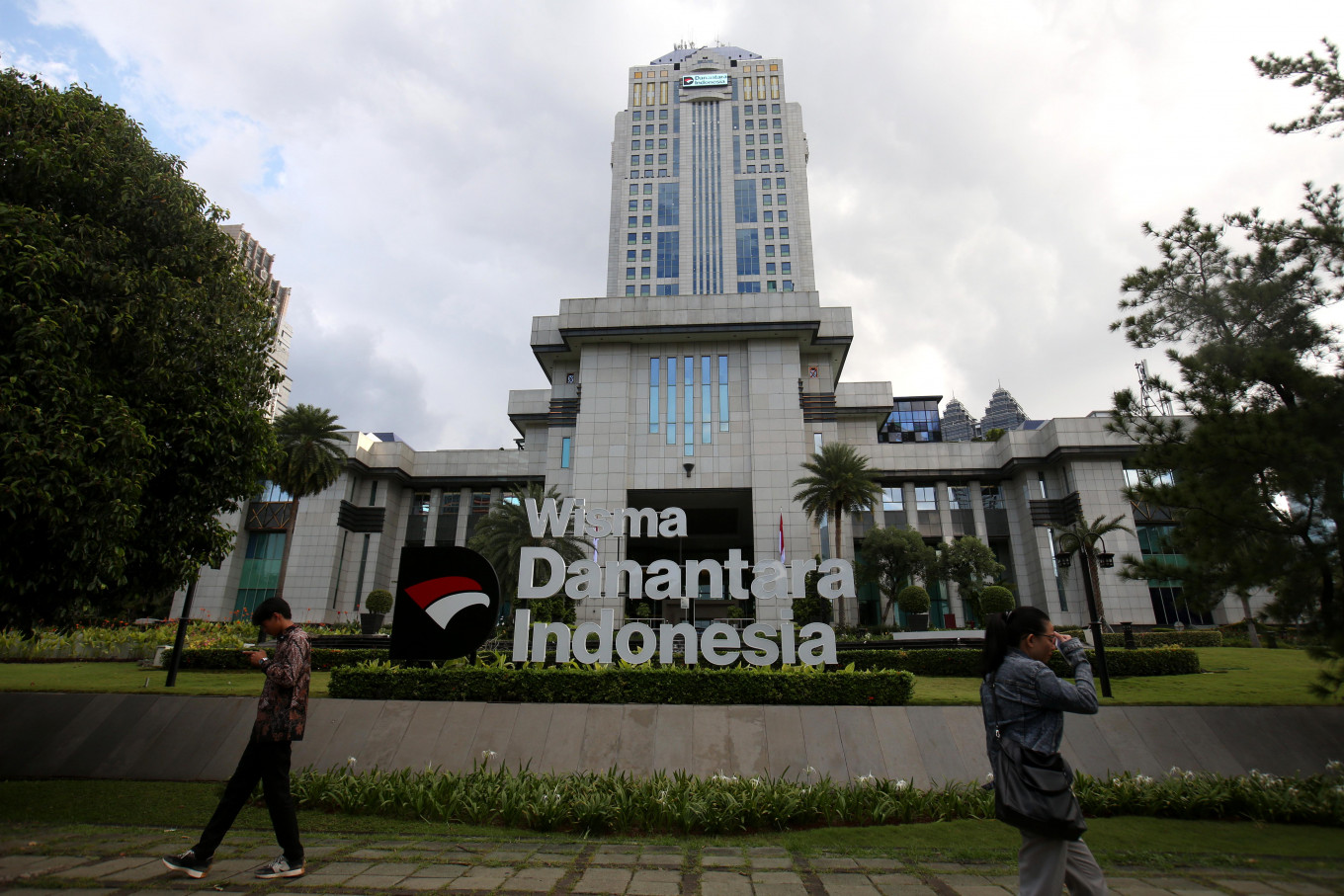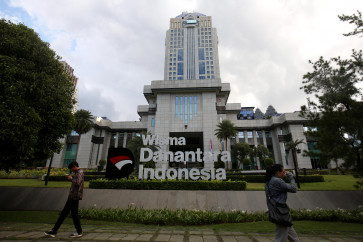Popular Reads
Top Results
Can't find what you're looking for?
View all search resultsPopular Reads
Top Results
Can't find what you're looking for?
View all search resultsGovernment taps into the patriotism of business groups
Patriot bonds are not conventional securities. They are designed less to maximize investor return than to rally support for the national agenda
Change text size
Gift Premium Articles
to Anyone
I
ndonesia’s fiscal resilience still leans heavily on foreign capital. As of early 2024, foreign investors held about 14 to 15 percent of outstanding government securities, equivalent to hundreds of trillions of rupiah. While this share has fallen from nearly 20 percent before the pandemic, it still leaves Indonesia vulnerable to shifts in global risk appetite. The pandemic made this exposure clear when sudden outflows forced extraordinary central bank intervention.
Now, Danantara, the sovereign wealth fund launched in 2025, is introducing so-called patriot bonds. On paper, they yield only 2 percent, far below government bonds at 5.8 to 6.1 percent, and therefore make little sense financially. But patriot bonds are not conventional securities. They are designed less to maximize investor return than to rally support for the national agenda. Functioning as a form of nation-building finance and a symbol of belonging, they provide Danantara with low-cost capital for strategic projects that underpin Indonesia’s long-term transformation.
The 2026 state budget earmarks over Rp 402 trillion (US$24.36 billion) for energy security and transition and more than Rp 530 trillion to boost investment acceleration, alongside continued allocations for the new national capital city project in East Kalimantan. These priorities align with the 2025-2045 National Long-Term Development Plan (RPJPN), which places clean energy, digital infrastructure and sustainable industrialization at the core of the Golden Indonesia 2045 vision. Against this backdrop, Danantara’s patriot bonds are more than a fundraising exercise. They channel patriotic capital to fuel projects at the heart of Indonesia’s national transformation.
The concept is not without precedent. After the 9/11 attacks, the United States issued patriot bonds as a special edition of savings bonds. They yielded around 3.5 percent when Treasuries were closer to 4.9 percent, a modest but symbolic discount. India’s diaspora bonds in the 1990s and early 2000s offered 7 to 8 percent in US dollars, above Treasuries but below the double-digit cost of borrowing India would have faced on open markets. Ukraine, facing a full-scale war, also issued so-called “war bonds.” While branded as patriotic, they were priced with double-digit yields in Ukrainian hryvnia and 3 to 5 percent in foreign currency, essentially emergency war financing where investors demanded a premium to offset extreme risk.
In this case, patriotism was a narrative overlay rather than a discount mechanism. These examples show that patriot bonds vary: sometimes involving yield sacrifice, sometimes commercial and sometimes survival tools. Indonesia’s 2 percent coupon compared with about 6 percent in the market creates a gap of roughly 400 basis points, one of the deepest patriotic discounts seen.
The challenge, however, is not only raising funds but channeling them into projects that genuinely improve efficiency. Indonesia’s ICOR (Incremental Capital Output Ratio), a measure of how much investment is needed to generate one unit of growth, still hovers around six.
In simple terms, it takes six rupiah of investment to produce just one rupiah of additional gross domestic product, a level that makes Indonesia less efficient than many of its peers. Policymakers aspire to bring this closer to the ideal three to four, where each rupiah invested yields more growth. If Danantara channels patriot bond funds into high-impact projects, it could help demonstrate how patriotic capital supports not just more investment but more efficient growth.



















